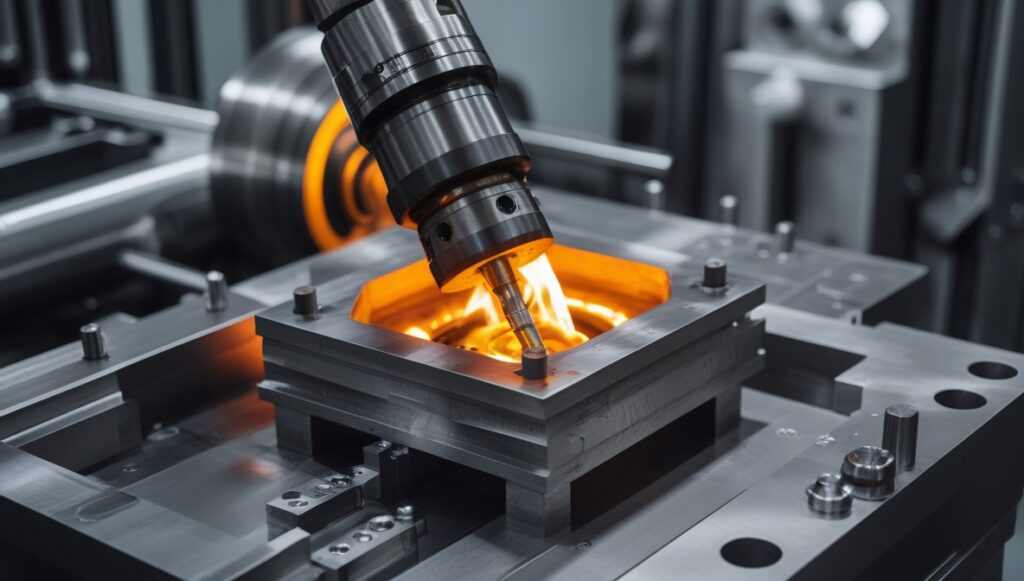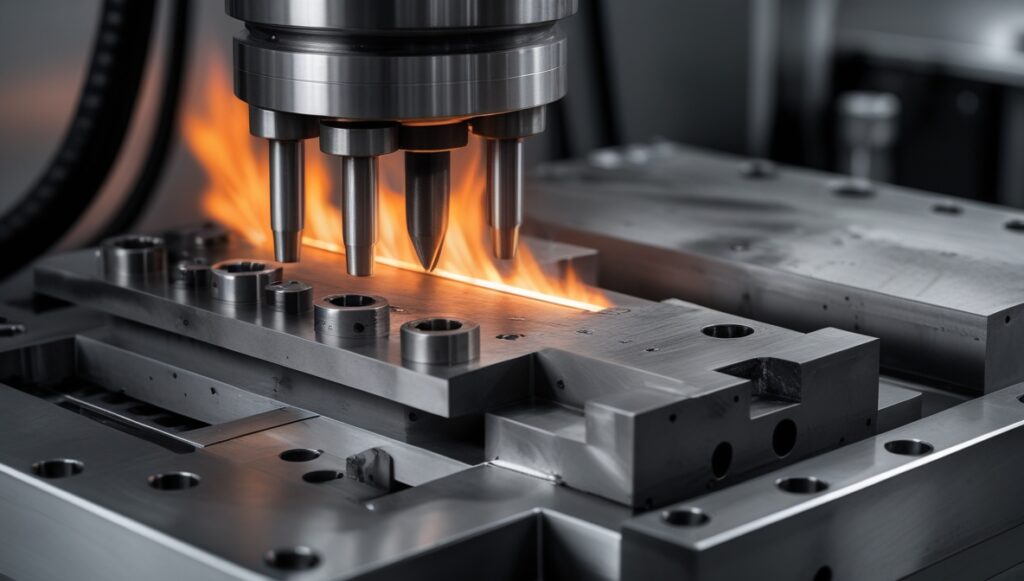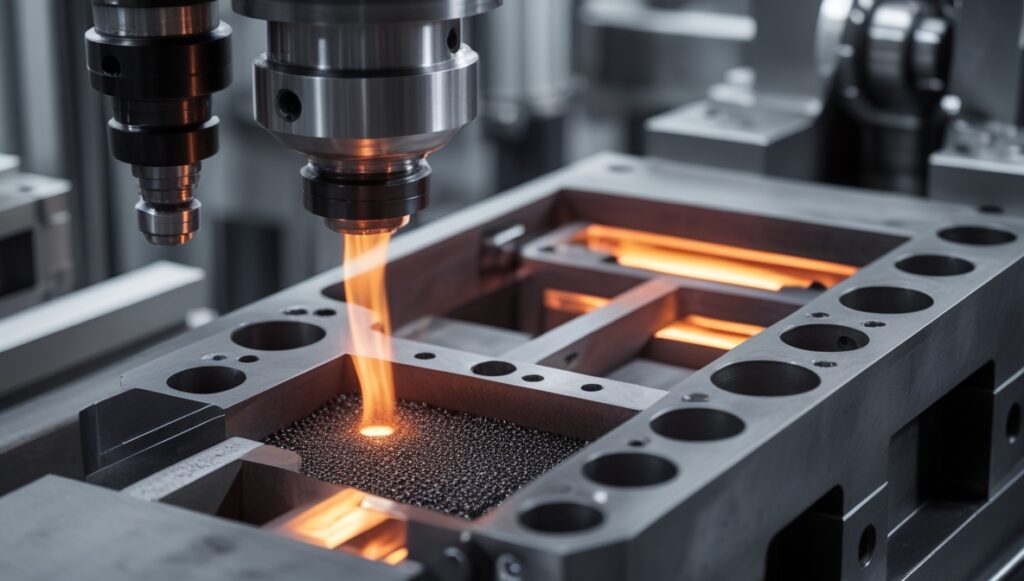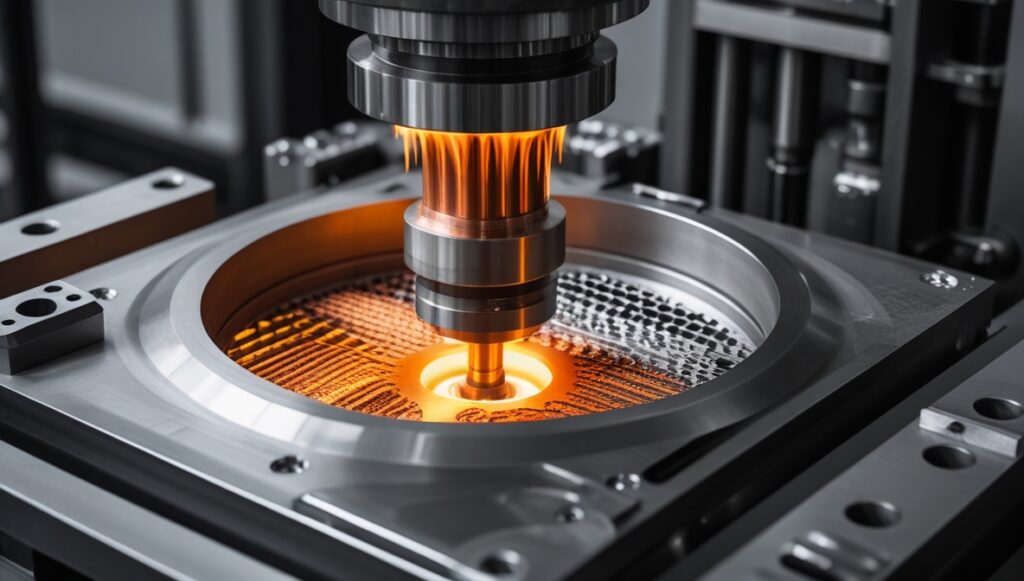Metal heat treatment stands as one of the most essential processes in manufacturing, engineering, and product design. By precisely heating and cooling metals under controlled conditions, industries can significantly improve mechanical strength, durability, hardness, and resistance to wear. The dependency on the correct heat treatment process is crucial to ensure components operate as needed, whether in the production of precision parts within the aerospace, automotive, or machinery tooling world.
At Mettler Design, we understand that maximizing material performance is non-negotiable. Therefore, mastering the common metal heat treatment techniques is fundamental to delivering high-quality, reliable components.
What is Metal Heat Treatment and Why is it Essential?

Heat treatment, or metallic heat treatment, is a precisely controlled process in which metals are heated and cooled to alter their physical and mechanical properties, all without changing their shape. This process is indispensable to modern manufacturing for several reasons.
| Benefit | Description |
| Better Performance | Well-treated metals withstand high stress and work effectively in harsh conditions. |
| Cost Efficiency | Heat treatment maximizes tool life and lowers wear, which cuts down on replacement costs. |
| Customisation | Engineers can tune material characteristics—like flexibility or hardness—to suit specific project requirements. |
| Safety | Heat-treated parts directly reduce the risk of structural failures, ensuring safer end-use applications. |
Export to Sheets
In short, the uses of heat treatment extend far beyond simple durability; they directly impact efficiency, safety, and innovation.
Prime Goals of Heat Treatment
The determination of the applicable types of techniques in heat treatment is driven by the kind of performance required in the material and its final application. The prime goals include:
- Increasing strength and hardness.
- Enhancing the ductility and toughness.
- Increasing resistance to wear and corrosion.
- Decreasing internal stresses.
- Achieving better machinability and formability.
The Common Metal Heat Treatment Techniques Explained

Engineers can select from a variety of metal heat treatment methods, each designed to achieve a specific microstructural change and mechanical result.
Annealing: Softness and Ductility
The annealing process involves raising the metal to a specific temperature and then cooling it slowly, typically within a furnace.
- Purpose: Relieves internal stresses, softens the metal for improved machinability, and refines the grain structure for uniformity.
- Applications: Common in sheet metal, wires, and automotive components where ductility and flexibility are more important than hardness.
Normalizing: Improving Toughness and Grain Uniformity
Normalizing heats the metal above its critical temperature but allows it to cool in the open air. Consequently, cooling is faster than in annealing.
- Purpose: Improves toughness and produces a uniform, fine-grained structure. It also enhances machinability compared to untreated steel.
- Applications: Structural steel components, machinery shafts and gears, and automotive parts.
Hardening and Tempering: The Strength Duo
Hardening requires heating steel to a high temperature and then rapidly cooling (or quenching) it in a medium like water, oil, or brine.
- Purpose: Increases maximum hardness and strength, reducing wear and deformation under load.
- Applications: Cutting tools, bearings, dies, and punches.
Following the initial hardening, tempering is an essential secondary process. It heats and re-cools the hardened steel to a lesser temperature.
- Purpose: Crucially, it reduces the brittleness caused by hardening while simultaneously increasing toughness and retaining strength.
- Applications: Springs, blades, and automotive components that require both strength and flexibility.
Case Hardening and Quenching: Surface and Core Mastery
Case hardening (or surface hardening) strengthens only the outer surface of the metal, keeping the core relatively soft and ductile.
- Purpose: Improves surface wear resistance while retaining core toughness to absorb shocks.
- Applications: Gears, shafts, camshafts, and crankshafts.
Separately, quenching is simply the act of cooling a heated metal very fast to achieve maximum hardness and strength, enhancing durability in heavy-duty applications like industrial dies and military-grade hardware.
Stress Relieving: Ensuring Stability
This technique involves heating metals to a moderate temperature—below the transformation point—and cooling gradually.
- Purpose: Primarily relieves internal stresses resulting from welding, machining, or casting, which prevents distortion and cracking during service.
- Applications: Welded structures, pressure vessels, and large fabricated components.
Essential Uses of Heat Treatment Across Industries

Heat treatment is a cross-industry technology, not limited to metallurgy alone.
- Aerospace: Used for high-strength turbine blades, landing gear, and aircraft frames.
- Automotive: Essential for transmission systems, suspension parts, and engine components.
- Medical Devices: Required for precise surgical tools, implants, and prosthetics.
- Manufacturing: Applied to machine tools, moulds, and dies to ensure durability.
Each of these safety-critical applications demands a unique style of heat treatment method, making the case for specialised heat treatment services critical.
Partner with Mettler Design for Precision Heat Treatment
Integrating effective metal heat treatment into the prototyping and production process is key to innovation. Engineers can perfect designs and simulate real-life conditions to ensure prototype parts are as strong and wear-resistant as the final product.
At Mettler Design, we combine expertise in all common metal heat treatment techniques—from annealing to case hardening—with advanced manufacturing services. We work closely with clients to deliver custom solutions, ensuring that the properties of your metal are precisely matched to your project’s requirements.
Take the next step in component optimization. We can assist you in refining your materials and driving your innovation process forward. Contact Mettler Design today for solutions that unlock the full potential of your materials.

